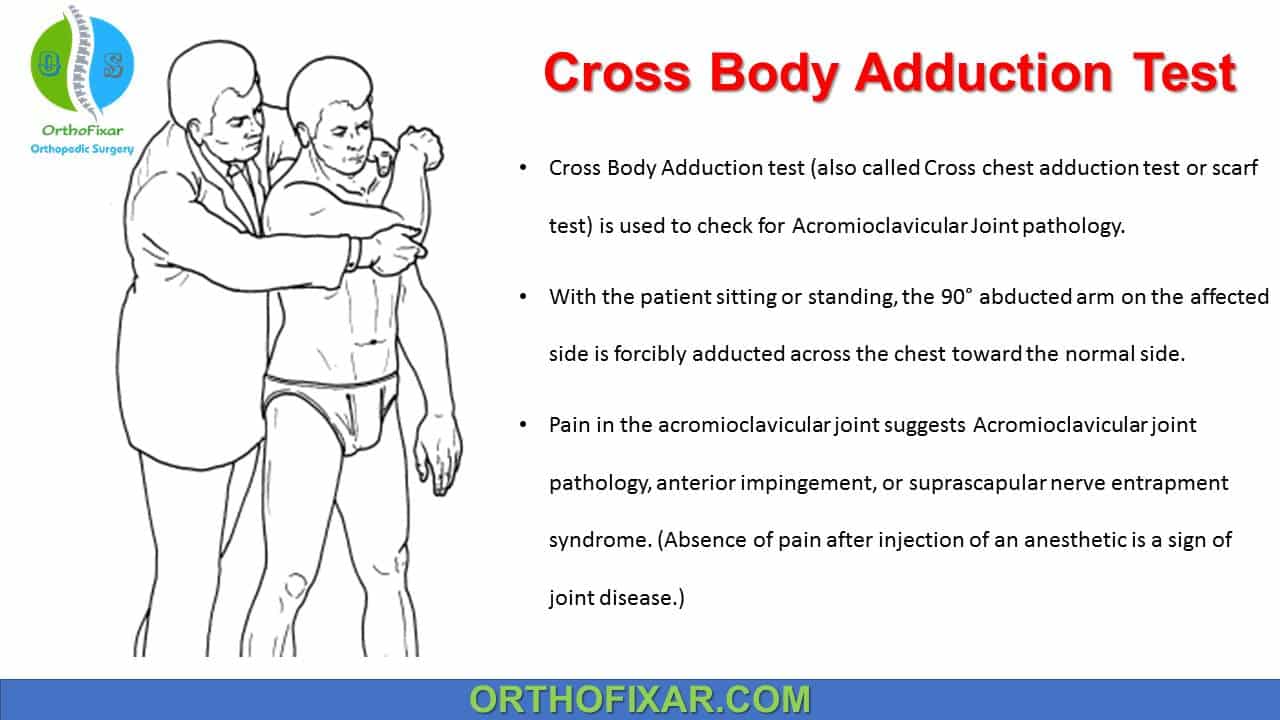
Cross Body Adduction Test • Easy Explained OrthoFixar 2023
Adductor longus strain is an injury to the muscle-tendon unit that produces pain on palpation of the adductor longus tendons or its insertion on the pubic bone & pain in the adductor region on resistance testing of the adductors. Adductor longus muscle strains are encountered more frequently in ice hockey & soccer.
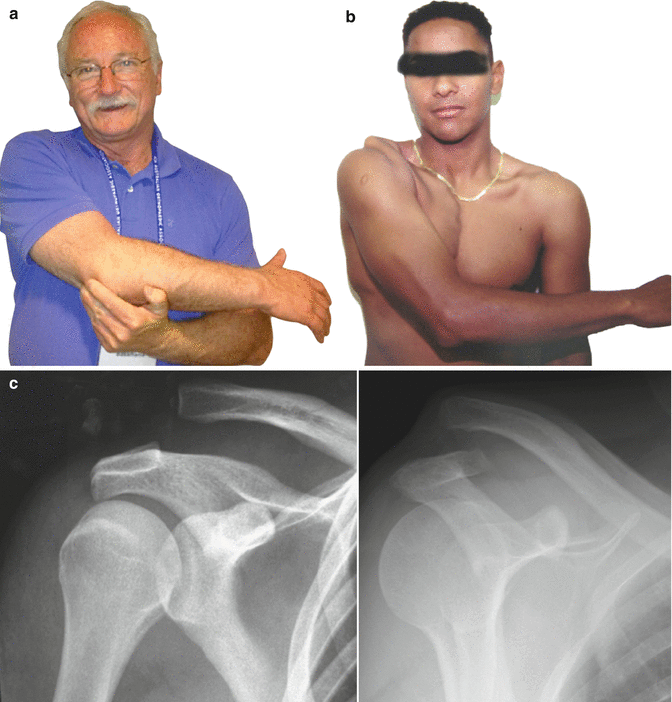
Pathoanatomy of AcromioclavicularAcromioclavicular Joint Instability Musculoskeletal Key
Enroll in our online course: http://bit.ly/PTMSK DOWNLOAD OUR APP:📱 iPhone/iPad: https://goo.gl/eUuF7w🤖 Android: https://goo.gl/3NKzJX GET OUR ASSESSMENT B.

Overhead Mobility Cross Body Adduction Stretch with Scapula Blocked YouTube
Cross Arm Adduction Impingement Test Ccedseminars 11.2K subscribers Subscribe 34 Share 3.2K views 2 years ago Athletic Injuries 204/304: Swimming Injuries To view more of Dr. Donald Ozello's.

Cross Body Adduction Test YouTube
Arm adduction represents movement of the arm towards the midline of the body in the coronal plane. Most individuals can manage 40° of isolated adduction. It is the opposite of arm abduction and contributes to the combined movement of shoulder circumduction. It is produced by: pectoralis major (sternal part) latissimus dorsi teres major teres minor

Neer impingement test. Figure 14. Crossarm adduction impingement test. Download Scientific
The Saccomanni (Sac) test is essentially the cross-adduction test, with the addition of attempted elevation against resistance. In a positive test, this results in some pain and the inability of the patient to maintain the arm in the adducted and elevated position against resistance.

Joint articulations and the three planes of motion Muscle Activation Guide
The cross-arm test isolates the acromioclavicular joint. The patient raises the affected arm to 90 degrees. Active adduction of the arm forces the acromion into the distal end of the clavicle.
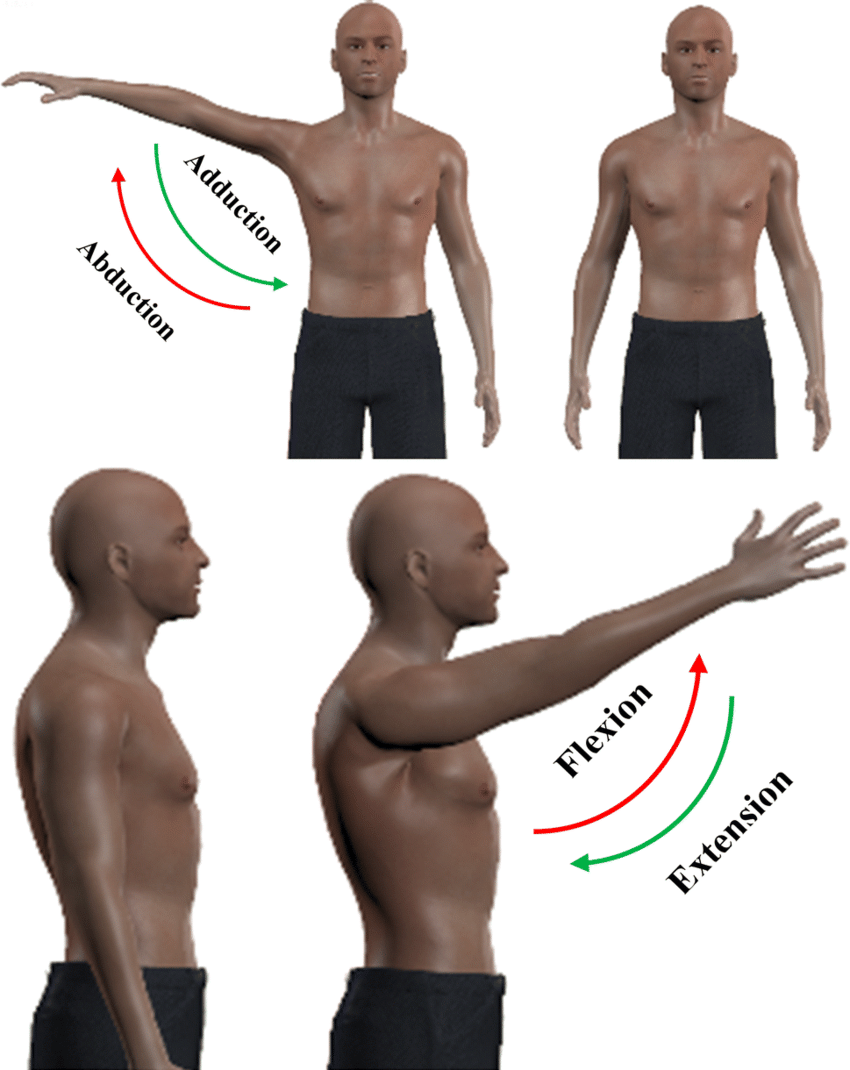
Schematic of shoulder abduction/adduction and vertical flexion/extension Download Scientific
Cross Body Adduction test (also called Cross chest adduction test or scarf test) is used to check for Acromioclavicular Joint pathology. In 1951, McLaughlin noted that many patients with AC joint pathologies developed a sharp pain at the top of the shoulder when the arm was actively adducted across the chest and towards the contralateral shoulder.

Seated Thoracic Extension with Arms Crossed YouTube
A cross-arm adduction test is performed by taking the affected arm straight across the body and pressing towards the opposite shoulder. A positive test recreates symptoms of pain directly at the AC joint. Many people with AC joint problems also have typical symptoms of rotator cuff impingement, since these conditions go hand in hand.
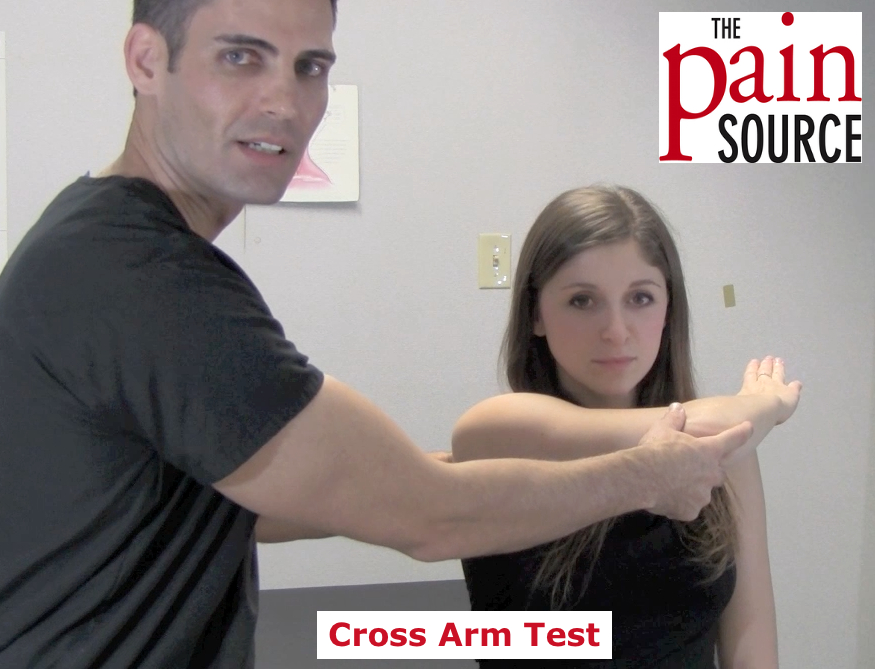
Cross Arm Test The Pain Source Makes Learning About Pain, Painless
The cross-body adduction test, also known as the crossover test, is used to evaluate the acromioclavicular joint.. Abduct the patient's arm to 90 degrees and then flex the elbow to 90 degrees.

Adduction Physiotherapy News
The Hawkins-Kennedy and cross-arm adduction tests are performed immediately following the injection to determine the extent of relief, confirming the diagnosis of subcoracoid impingement.

Cross Body Adduction YouTube
Based on analysis of the two included studies (Table 1), the special tests evaluated were Paxinos sign, O'Brien's test (AC joint active compression), cross-body adduction, Hawkins- Kennedy, and AC joint tenderness to palpation (Table 2). The extracted statistical characteristics for the evaluated special tests are listed in Table 3.
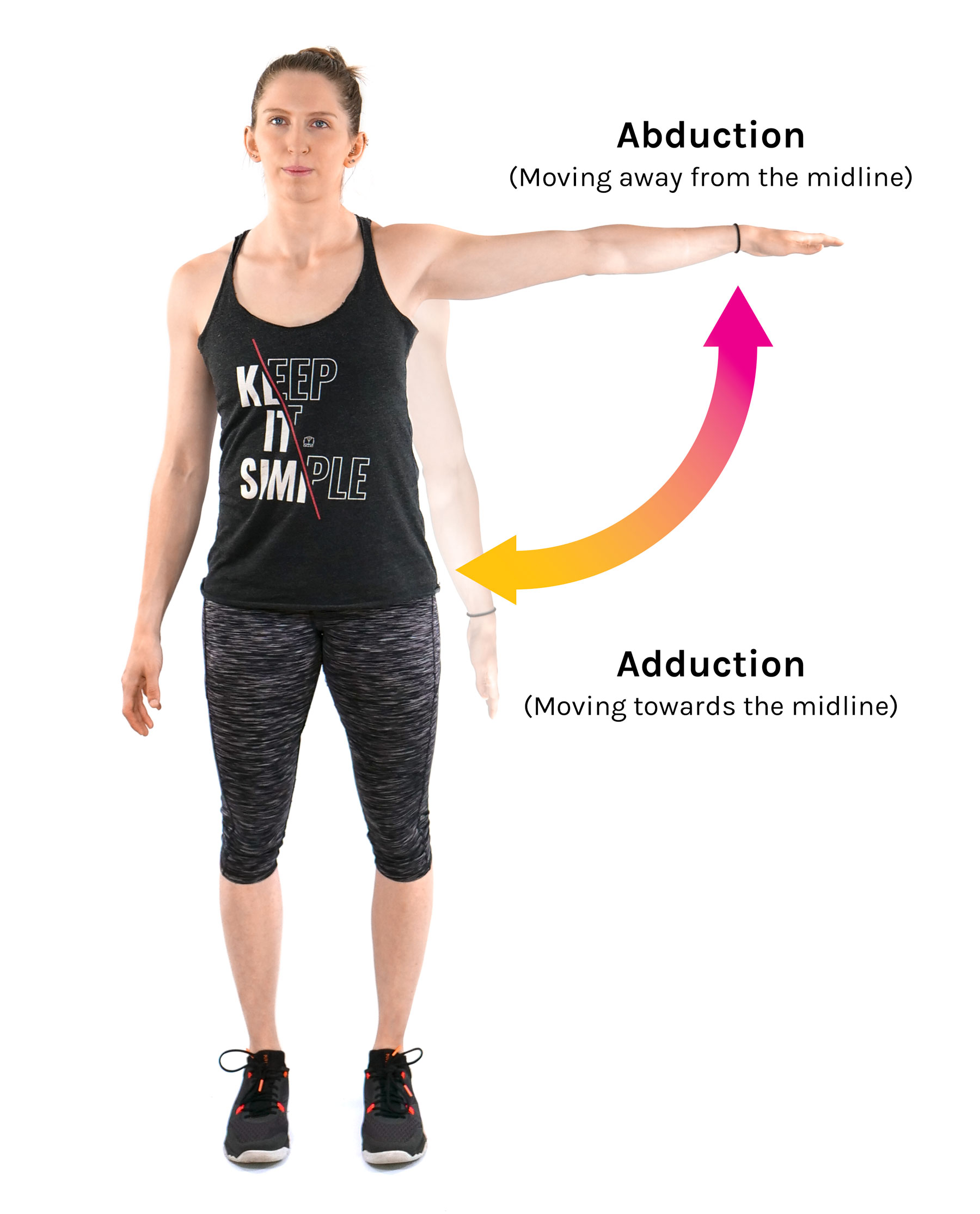
Anatomical Movements Tom Morrison
Do not perform cross-arm adduction test during this phase (phase I) due to pain limiting test performance. Based on pain, perform cross arm adduction test between 3 and 6 wk postinjury. If there is persistent pain, posterior overriding of the clavicle and scapular dysfunction, surgical management is suggested.
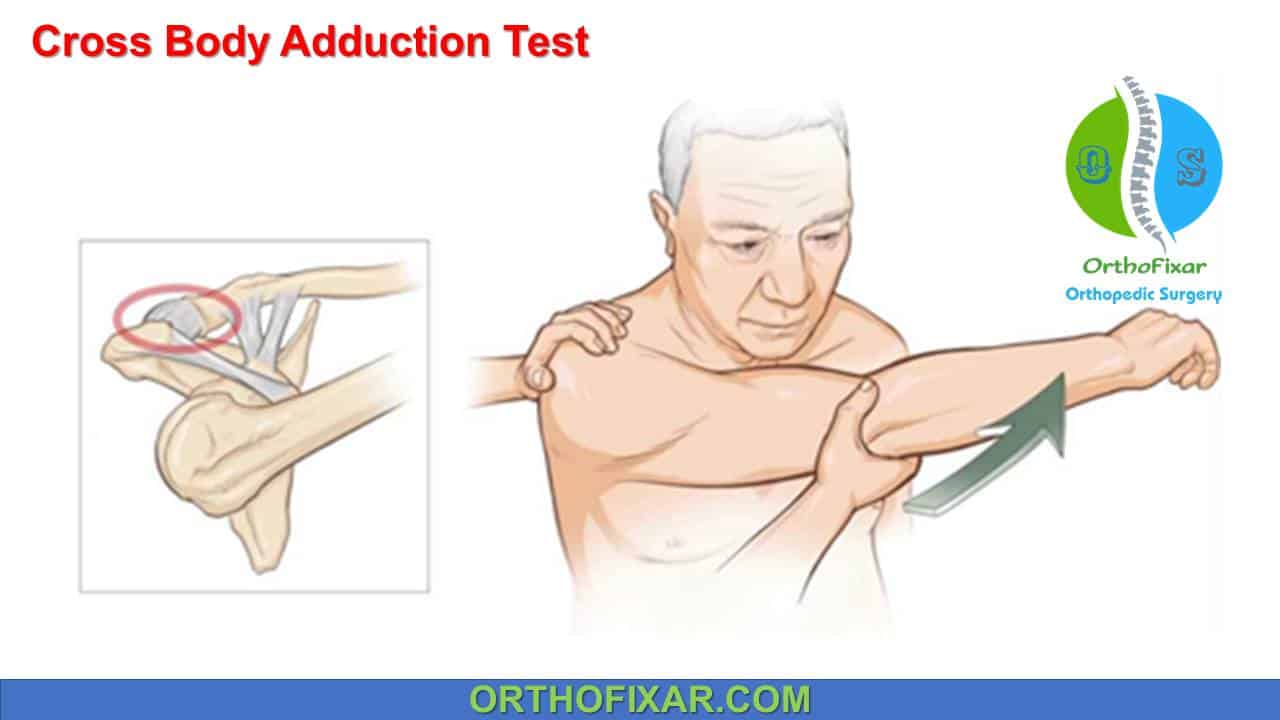
Cross Body Adduction Test
The Scarf Test (or Cross Arm Adduction Test, or Cross Chest Adduction Test) is a very simple test that is used in orthopedic shoulder examination as a test for acromioclavicular (a-c) joint injury / pathology. A positive test commonly indicates ac joint osteoarthritis or ac joint ligament injuries such as a ligament sprain or joint separation.

PPT History & Physical Examination of the Shoulder PowerPoint Presentation ID1185166
Ask the patient to abduct both arms by elevating them laterally until they are above the head, at 180°. Abduction. Image credit. Cross-body Adduction Have the patient flexing the upper extremity forward to 90°. From this position, ask the patient to maximally adduct the shoulder by moving the arm horizontally all the way to the other side.

Der CrossBodyAdductionTest für das ACGelenk YouTube
A test for the integrity of the acromio-clavicular joint.The test is positive at the end of the maneuver there is pain at or near the acromio-clavicular join.

Single joint movements. a shoulder abduction; b shoulder flexion; c... Download Scientific
Overview The acromioclavicular (AC) and sternoclavicular (SC) joints function to connect the upper extremity to the axial skeleton. Injury to these ligamentous-restrained joints often results from trauma. AC joint injuries are common and account for 9% of all shoulder injuries.